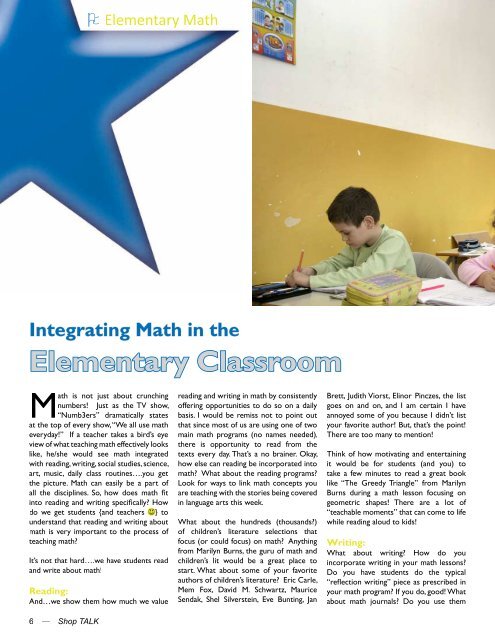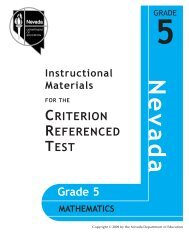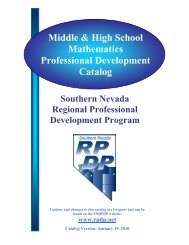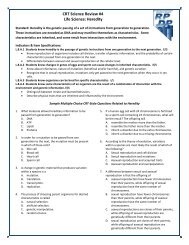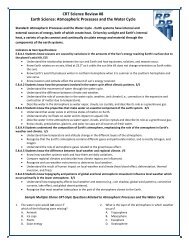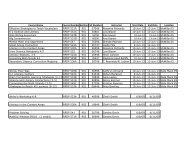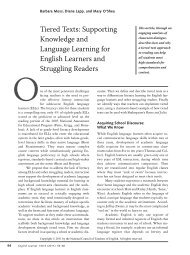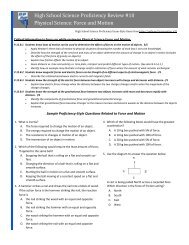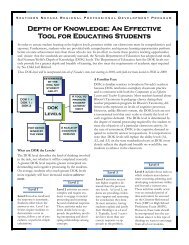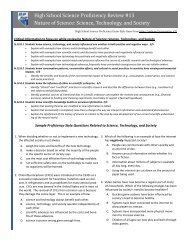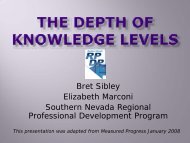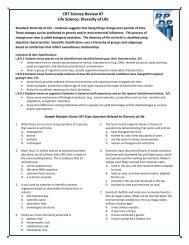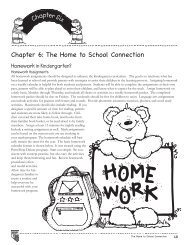Science Proficiency Design - RPDP
Science Proficiency Design - RPDP
Science Proficiency Design - RPDP
You also want an ePaper? Increase the reach of your titles
YUMPU automatically turns print PDFs into web optimized ePapers that Google loves.
Elementary Math<br />
integrating math in the<br />
Elementary Classroom<br />
Math is not just about crunching<br />
numbers! Just as the TV show,<br />
“Numb3ers” dramatically states<br />
at the top of every show, “We all use math<br />
everyday!” If a teacher takes a bird’s eye<br />
view of what teaching math effectively looks<br />
like, he/she would see math integrated<br />
with reading, writing, social studies, science,<br />
art, music, daily class routines….you get<br />
the picture. Math can easily be a part of<br />
all the disciplines. So, how does math fit<br />
into reading and writing specifically? How<br />
do we get students {and teachers } } to<br />
understand that reading and writing about<br />
math is very important to the process of<br />
teaching math?<br />
It’s not that hard….we have students read<br />
and write about math!<br />
reading:<br />
And…we show them how much we value<br />
— Shop TALK<br />
reading and writing in math by consistently<br />
offering opportunities to do so on a daily<br />
basis. I would be remiss not to point out<br />
that since most of us are using one of two<br />
main math programs (no names needed),<br />
there is opportunity to read from the<br />
texts every day. That’s a no brainer. Okay,<br />
how else can reading be incorporated into<br />
math? What about the reading programs?<br />
Look for ways to link math concepts you<br />
are teaching with the stories being covered<br />
in language arts this week.<br />
What about the hundreds (thousands?)<br />
of children’s literature selections that<br />
focus (or could focus) on math? Anything<br />
from Marilyn Burns, the guru of math and<br />
children’s lit would be a great place to<br />
start. What about some of your favorite<br />
authors of children’s literature? Eric Carle,<br />
Mem Fox, David M. Schwartz, Maurice<br />
Sendak, Shel Silverstein, Eve Bunting, Jan<br />
Brett, Judith Viorst, Elinor Pinczes, the list<br />
goes on and on, and I am certain I have<br />
annoyed some of you because I didn’t list<br />
your favorite author! But, that’s the point!<br />
There are too many to mention!<br />
Think of how motivating and entertaining<br />
it would be for students (and you) to<br />
take a few minutes to read a great book<br />
like “The Greedy Triangle” from Marilyn<br />
Burns during a math lesson focusing on<br />
geometric shapes! There are a lot of<br />
“teachable moments” that can come to life<br />
while reading aloud to kids!<br />
Writing:<br />
What about writing? How do you<br />
incorporate writing in your math lessons?<br />
Do you have students do the typical<br />
“reflection writing” piece as prescribed in<br />
your math program? If you do, good! What<br />
about math journals? Do you use them


